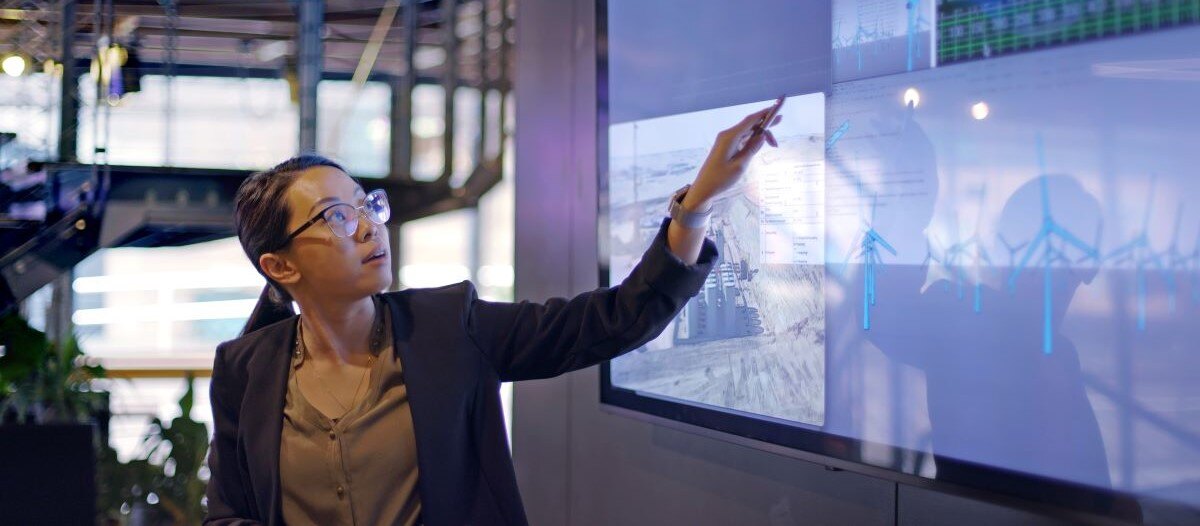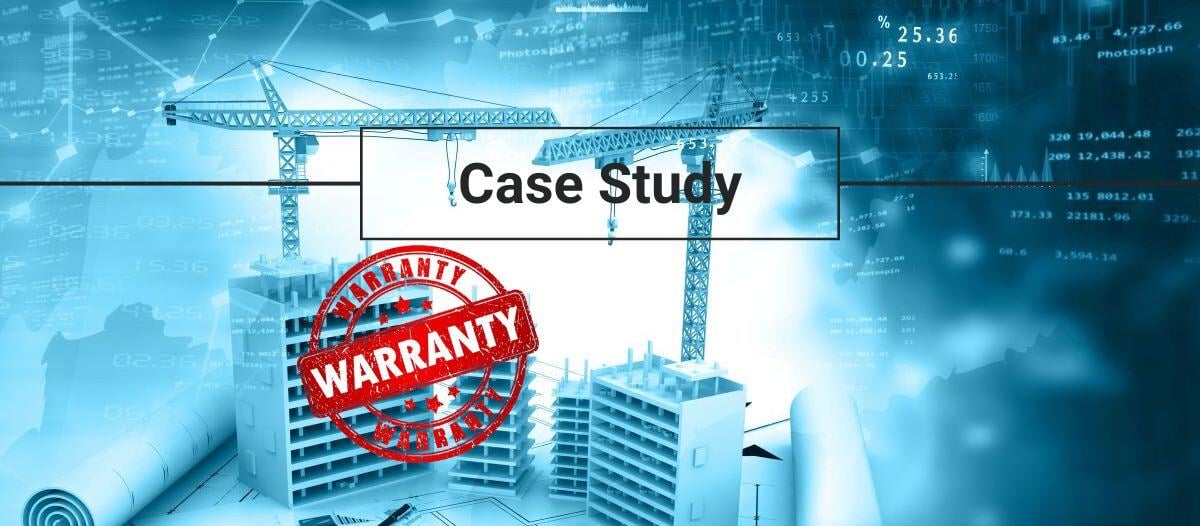Taking the Lead
Selling sustainability to the C-Suite

As the climate crisis grows in urgency, governments are tightening environmental regulation and the global green movement is picking up pace. Workplaces are a key battleground in this transition to a greener, more sustainable future.
Facility managers are stewards of the workplace and must adopt a mantel of leadership within this movement. This presents the FM function the opportunity to truly define itself as a champion of sustainability through actions rather than just words.
To be achieved though, sustainability needs buy in from all levels of the organization. How can FMs convince those at the helm? A business case based around technology must be built for environmental, social, and governance (ESG) to garner support from those with the loudest voices in the organization: the C-Suite.
Moonshot
Where should FMs start their journey towards a more sustainable workplace; and what does that future workplace look like?
The carbon-free dream might be buildings clad entirely in solar panels, while 100 percent efficient wind turbines would dominate the roof, and disposable plastics would be relegated to the history books. But that future is still a way away.
So, in the meantime, it needs to be considered what is possible. Should FMs focus on initiatives that can be rolled out now, with ease, without excessive red tape and are likely to have positive results?
Potential areas that can be easily improve upon include:
- Building strategic alliances with other climate-conscious stakeholders
- Cutting back on underutilized space
- Adopting promising and sustainable technologies early
- Reducing the physical boundaries of the workplace
Building alliances
Many will likely start with grand ambitions for a sustainable future. But the bigger the goal (for the FM department, the buildings it is responsible for, and the organization), the more stakeholders will be necessary to sign off on it.
Fortunately, many of the barriers of previous years are dropping. Climate change is becoming an increasingly pressing issue that needs to be addressed, and organizations are also realizing the business case in attracting talent and customers through climate-conscious credentials.
British newspaper The Telegraph recently posed the question: “Should you hire a head of sustainability?”
So, should it be done? The answer is that it depends, of course.
But if an organization wants to move beyond sustainability initiatives that merely tick boxes, and look good in an ESG report, it needs to be considered whether a sustainability task force with someone in a leadership role at the helm needs to form.
This type of leadership can better form a cohesive strategy and push sustainability up the agenda to the level of other organizational core focuses.
It would bode well for facility managers to form a strong bond with these new task forces to create concrete alliances and improve the execution of sustainability initiatives. These new task forces may even have budgets of their own. This offers an opportunity for several departments to unite their budgets in achieving grander sustainable goals.
Finding where this journey starts can be a challenge on its own. There are many areas that need addressing, so priorities must be made. Easy wins should be identified, while longer-term goals planned for so there is a clear and concise strategy running through all improvements that lead to one overarching goal.
Once the FM function is established as a sustainability champion within the organization, the journey can begin in creating a truly sustainable workplace. Below are some highlighted areas that mark the first steps of this process.
Measuring and evaluating to set goals
First, goals must be set to work towards. Something that will define whether the plan of building a sustainable workplace is successful or not, but before goals are defined, the baseline must be measured.
Get to know the energy consumption of buildings, how it fluctuates, and how people are interacting with the workplace. These aspects should be assessed alongside other metrics to help give a clearer picture of facilities and highlight opportunities that are ripe for improvement.
Second, define long-term and short-term goals, and make sure the right tools are in place to measure progress. These tools can also potentially reveal other avenues for improvement, and ensure short-term milestones are met on the journey to the long-term ones.
Jettisoning space wastage
One of the keys to sustainability is using office space efficiently, particularly as it accounts for the second-highest operational cost for businesses.
Not only are the costs of having a larger space higher, but the utilities necessary to accommodate the space are higher too. Because of that, resource scheduling can be increasingly effective when understanding the building’s usage.
Data regarding bookings can be used alongside data from other systems to identify inefficiencies and space wastage. It also allows employees to manage and book space based on their needs, creating a collaborative and flexible workspace that is better used.
On top of that, utilization reports will give a better understanding of how employees interact with their workplace, informing more areas for potential reductions.
Keeping a finger on the pulse of emerging technologies
Disruptive times drive disruptive technologies. A silver lining of the pandemic was the massive leaps made in workplace technologies that enable safer, more resilient and more sustainable workplaces.
One of these newer technologies — and which is still in continuous development now — is electronic paper displays. While making its debut primarily in e-readers it has made the successful leap into the enterprise space.
While this technology has some limitations, it excels in sustainability, boasting itself as 99 percent more energy efficient than LCD or LED displays. With many advances over recent years, including adding touch-screen capabilities, improvement to limited color displays, and finally full-color displays, it is a technology to keep an eye on.
Reducing the physical boundaries of a workplace
A lot has been said about remote and hybrid work, especially when it comes to environmental benefits, and it is also difficult not to mention when talking about building sustainable workplaces.
The factories of the early 1900s have been substituted for open floorplans, but up until early 2020, the punch-card mentality of Henry Ford’s factories remained. In a post-COVID-19 reality, however, the opportunity to rethink our workplaces has been presented in a way that will not only impact the lives of employees, but also the environment.
For instance, in Europe, personal cars account for roughly 60 percent of transportation related CO2 emissions. This means that remote options are bound to have a positive effect on sustainability, simply because fewer people commuting to the office will mean less commuting-related CO2 emissions.
But at the same time, remote options bring with them a whole new set of challenges for FMs, so proposing remote and hybrid work options to the C-suite will fall flat, if these challenges are not solved.
How are employees going to find each other when they can work from anywhere? How are they going to collaborate if working hours start shifting based on personal preference? How will productivity be affected?
For some companies, the solution to these challenges has been a technological one, while others have found a more strategic or even organizational answer. Which solution is best suited for wider adoption remains to be seen, but a solution is needed. More often than not, the FM function must take the lead in finding them, especially because each solution often presents more challenges for FMs teams than anyone else.
When the issue of collaboration, productivity and finding each other across physical locations is solved for the general employee, organizations and FMs must learn how to equip FM teams and their budgets with the same degree of flexibility.
Final words
How can sustainability be sold to the post-pandemic C-suite?
This is the core question, and the answer — surprising or not — is that it comes down to budget, brand and growth opportunities.
Creating a more sustainable workplace requires investing in solutions, technology, time spent implementing organizational changes and buy-in from key stakeholders. But at the same time, opportunities for positive outcomes related to the transformation go quite a way beyond the mere brand value of being a sustainable workplace.
Things like the ability to scale building use, and energy consumption, the question of sustainability becomes inherently more financial and more measurable. Not to say that finances should be the only reason to create a sustainable workplace, but it will often make the case even more compelling.


Read more on Finance & Business , Leadership & Strategy and Sustainability
Explore All FMJ Topics









